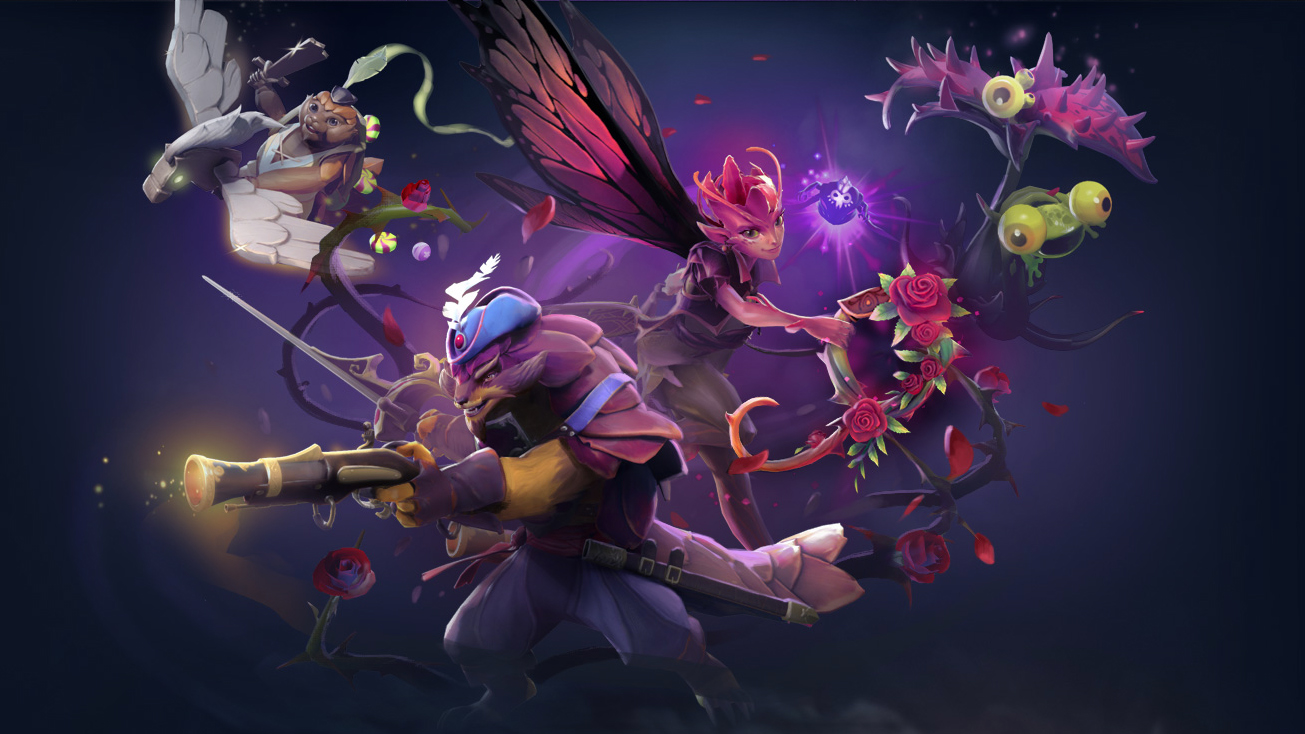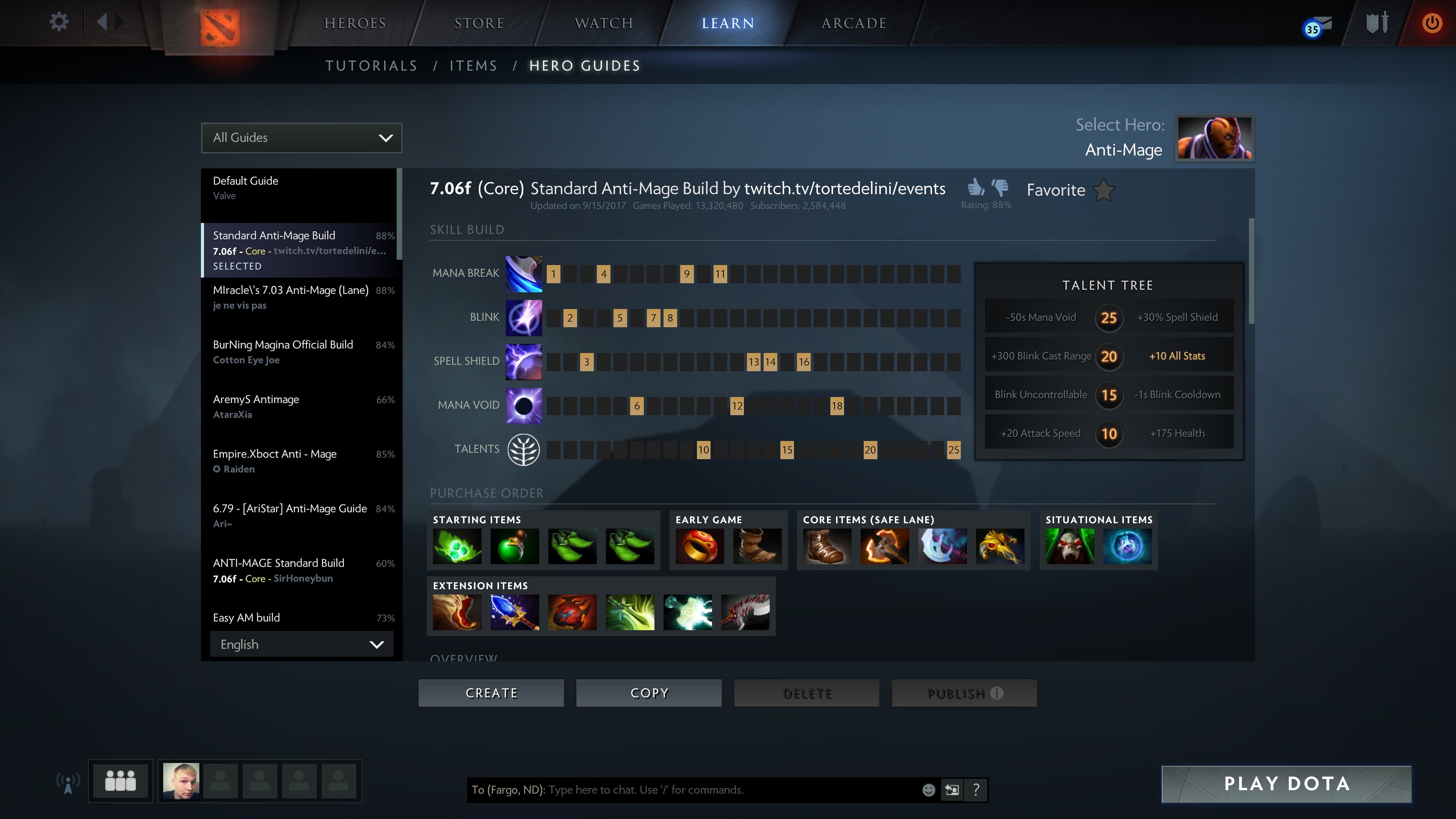Valve wants you to fight more, hide less in Dota 2's new Dueling Fates update
Newcomers are more welcome than ever after the latest Dota 2 patch.

Months of Dota 2 fans going stir crazy for a new patch finally came to an end this week. The game's newest major patch, which comes around this time every year, is finally here to shake up Dota 2 with new items, new ability changes, and even two new heroes in the form of Dark Willow and Pangolier.
As with any big Dota patch, the Dueling Fates update will alter or break most of the winning strategies that have defined the game's current meta. We likely won't won't understand just how vital these changes are for weeks to come—especially regarding the two new heroes. The overriding motivations of the patch, however, seem clear: to make Dota more inviting to new players and to encourage more action at every stage of the game.
The first pillar of the patch is obvious. "Turbo Mode" is a new game-type that increases XP and gold gains, while letting players buy items anywhere on the map. Valve's self-professed goal with the mode is to cut match times (and the accompanying emotional investment) for new players. That seems obvious, but it's just the flashiest accessibility change among many in Dueling Fates.

Jungling has been severely nerfed with the removal of Iron Talon.
Character guides are also easier to access in-game, I noticed some new menu tooltips after starting my first game on the patch, and a rotating selection of 10 daily heroes receive bonus items just for being selected. Together these seem like a solid second step for theoretical new Dota 2 players who've cut their teeth on Turbo Mode.
For old and new players alike, Dueling Fates also generally encourages more fighting. That's been a common thread among previous patches and it makes sense. Player-to-player combat is where Dota's mechanical interactions are at their most dynamic—their most exciting to watch and perform. You rarely see Lifestealer, a character that can climb into and explode out of allies, hop inside map-wide sprinter Spirit Breaker just to harvest gold from NPC creeps, after all.
There should be a lot more opportunities for skirmishes now. Jungling has been severely nerfed with the removal of Iron Talon—one of the most essential tools for killing hearty jungle creeps. Meanwhile, lane creeps actually provide more XP and gold than before. So there's greater incentive for opposing players to dance around each other in-lane, harvesting creep waves and haranguing each other out of position.
Bounty runes (which periodically provide free gold and XP) have also shifted to more contestable locations. That means junglers can no longer offhandedly snag the golden shards between creep culls. It also likely means we'll see more fights around the runes, as players try to steal them.
Keep up to date with the most important stories and the best deals, as picked by the PC Gamer team.

While it's common for Valve to make map changes and add items, Dueling Fates is ostensibly the first patch to remove equipment entirely. The loss of Iron Talon seems like a clear message from Valve that they want players out of the jungles and closer to where things get ugly.
Speaking of items, this update includes a few new ones, too. One of the most interesting of which is Meteor Hammer. The blue basher summons great big fireballs after a three-second cast time. That's not very interesting on its own, but the kicker is that it damages buildings—making it the first item with a spell that can. Heroes like Pugna, Techies, and Jakiro have always been able to siege buildings indirectly that way, but an item is much more versatile in that anyone can carry it.
Meteor Hammer is also just the tip of a very siege-centric iceberg. Bases no longer sport shrines, for instance, meaning defending players can't periodically heal while defending their own high ground. Extra hard-hitting siege creeps now spawn 10 minutes earlier than before—not to mention they can be made invulnerable, thanks to map-wide defensive glyphs now affecting creeps as well as buildings. And tier four towers, which defend the all-important ancients in Defense of the Ancients, no longer regenerate health.

Straightforward fighting is the order of the day yet again.
That's all a shame if you happen to be losing, but whichever team has the momentum is now more likely to keep it. It was tremendously easy to win fights for most of a one-hour match in the previous meta, only to collide into protracted battles outside the opposing team's doorstep. Even if you didn't lose, it usually meant a long, dull game of chicken where neither team wanted to make the first move. So straightforward fighting is the order of the day yet again.
To help you with that, every single hero has different match-permanent talent options, plus total ability reworks for six existing characters. Talents already drastically altered Dota 2 when they were first introduced in 2016's The New Journey update. Now the developers are fine-tuning them further in ways that totally overhaul certain heroes' roles. The longtime spellcaster Bane, for example, seems like he might find new life as a physical damage character thanks to a talent that lets him drain it from enemy heroes.
Between those hero changes and the renewed emphasis on player-to-player to combat, it seems like Valve has a definite direction in mind for Dota 2—one that puts the complex game's best features forward more frequently. Meanwhile, Turbo Mode and more accessible guides mean this is happening at a time when the company is courting more new players than ever. If Dueling Fates succeeds in making the game more exciting more frequently, as appears to be the goal, it really does seem like the perfect time for those new players to hop aboard.

